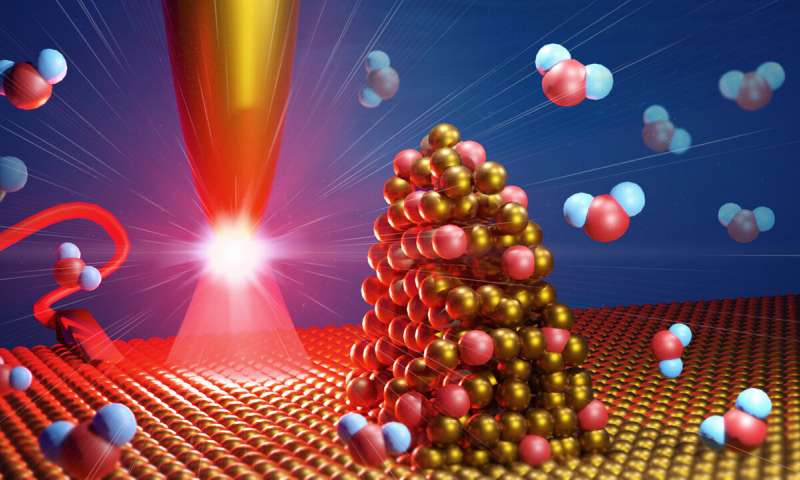It is a well-known school experiment: Applying a
voltage between two electrodes inserted in water produces molecular
hydrogen and oxygen. Researchers seek to make water splitting as
energy-efficient as possible to advance industrial applications.
The material of the electrode and its surface quality are crucial
aspects that determine splitting efficiency. In particular, rough
spots of only few nanometers in size, called reactive centers,
determine the electrochemical reactivity of an
electrode.




